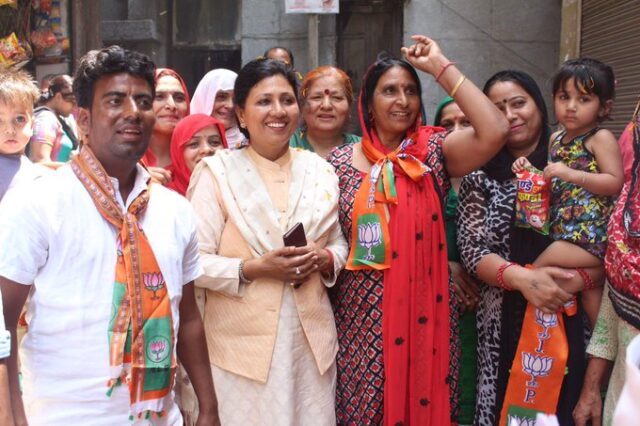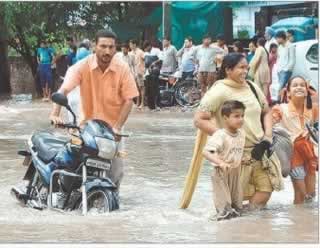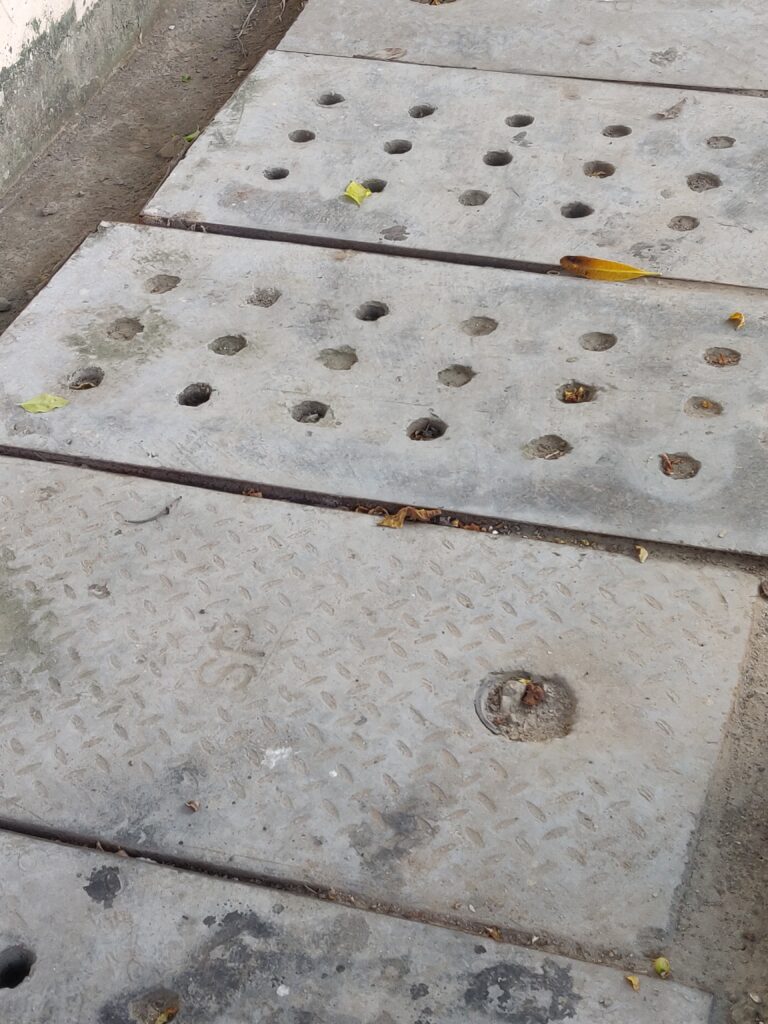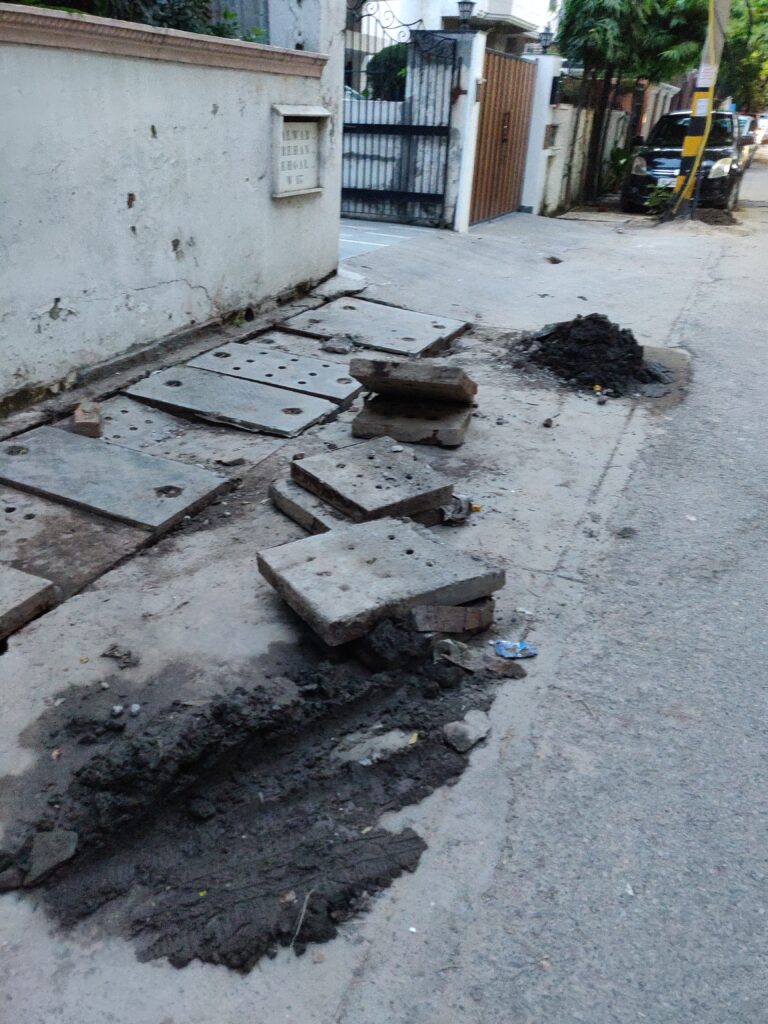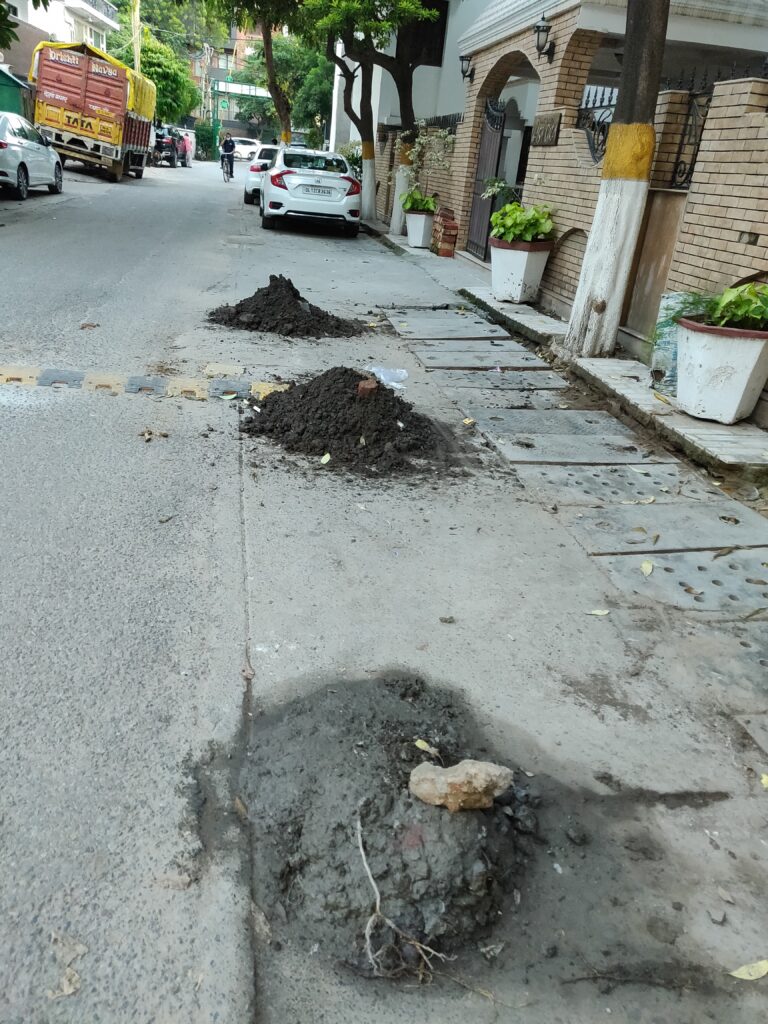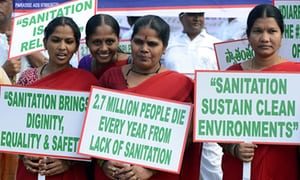
Background
Sanitation is a key issue for women, consistent with their need for privacy, dignity, safety and self respect. Lack of basic sanitation and safe water significantly impacts the health and safety of women and leads to low enrollment and high drop out particularly for adolescent girls at puberty in schools. Menstruation, pregnancy, and postnatal recovery also become problematic if there are not adequate sanitation facilities to properly manage them.
The issue of poor sanitation and hygiene impacting women becomes even more critical when we look at the alarming status of sanitation facilities in the world. It has been estimated that 2.6 Billion worldwide out of which 1 billion women have no access to sanitation facilities. With around 60% of all open defecation in the world being in India and manual scavenging still prevalent in about 8 lakh insanitary latrines out of which around 5 lakh are in rural areas and around 3 lakh in urban areas alone as per census 2011 the sanitation scenario in India is rather poor.
Clearly we must pay greater heed to women’s voices in our development thinking, planning and action and give sanitation higher priority. There are many examples of the key role which women have played in bringing about better environmental awareness and health in different parts of the world. This issue is not of resources alone but of purposeful and genuine community participation and management in which the central role of women is recognized.
The importance of involving both women and men in the management of water and sanitation has been recognized at the global level, starting from the 1977 United Nations Water Conference at Mardel Plata, the International Drinking Water and Sanitation Decade (1981-90) and the International Conference on Water and the Environment in Dublin (January 1992), which explicitly recognizes the central role of women in the provision, management and safeguarding of water and sanitation. The close interlinkages between gender equality and women’s empowerment (goal 3), and target 10 on access to water and sanitation are illustrated in the table below:
| MDG relevant targets |
Ensure environmental sustainability (Goal 7 )
Halve by 215 the proportion of people without sustainable access to safe drinking water and basic sanitation (target 10) |
|
Contribution of domestic water supply and sanitation |
Contribution of sound water resources management and development |
| Promote gender equality and empower women ( Goal 3) |
Reduced time, health and care –giving burdens from improved water services give women more time for productive endeavors, adult education, empowerment activities, leisure
Convenient access to water and sanitation facilities increase privacy and reduce risk to women and girls of sexual harassment/assault while gathering water.
Higher rates of child survival are a precursor to other demographic transition to lower fertility rates; having fewer children reduces women’s households responsibilities and increases their opportunities for personal development. |
Community based organizations for water and sanitation management can improve social capital of women by giving them leadership and networking opportunities and building solidarity among them. |
- Source: Millennium Project Task Force on Water and Sanitation, Health, Dignity and Development: What will it take? Stockholm, Stockholm International Water Institute, 2005.
The sanitation challenge that rural India, with its large population size & different hydro-geological regions faces and traditional cultural practices in the area of sanitation is unique and unparalleled in the world. To address this challenge, for over a decade, the Ministry of Drinking Water and Sanitation, Government of India has been running a Total Sanitation Campaign (TSC). TSC seeks to provide access to individual toilets to all rural households, toilet units in all Schools and Day care Centres “Anganwadis” and waste management to ensure clean environment in the villages. To give a fillip to the TSC, Government of India also launched the Nirmal Gram Puraskar (NGP) that sought to recognise the achievements and efforts made by Gram Panchayats in ensuring full sanitation coverage.
The TSC has been recently revamped as the Nirmal Bharat Abhiyan(NBA), “Clean India Campaign”. The NBA has key objectives as the acronym suggests- First it aims at making Gram Panchayats (GPs) “Nirmal” which means each and every individual in the village has a good quality toilet which is usable and sustainable, all people have access to water and each village has a self sustainable solid and liquid waste management system so as to ensure clean and healthy living environment. The second is that it sets time bound targets to ensure that “Bharat” becomes Nirmal which means that NBA entails creation of awareness and provision of sanitary facilities to entire communities in a phased, saturation mode with creation of ‘Nirmal Grams’ as outcomes. Under the Nirmal Bharat Abhiyan women have been given a central role in planning and implementing of the sanitation programme.
Role of women in Nirmal Bharat Abhiyan
The Nirmal Bharat Abhiyan (NBA) gives a special focus to address the sanitation needs of women who play a key role in planning, implementation, monitoring of the programme. Women as change agents in the Nirmal Bharat Abhiyan (NBA) have had a tremendous impact in many Panchayats. They have been involved not only in mobilizing communities to create a demand for sanitation facilities but also actual construction of toilets and managing production centers and rural sanitary marts for provision of affordable sanitary ware.
Women as change agents for promoting sanitation
Women play a crucial role in taking up community mobilization and awareness generation in rural sanitation programme. The major themes have been women’s dignity, comfort, status, operation and maintenance, cost effectiveness, technological options etc. which are being used. Women as mothers can influence the practice of using sanitation facility among young girls and boys. The awareness building covers the entire community but is targeted more specifically at women since the absence of water and sanitation affects them more dramatically and more immediately. Sustained discussions compel women to examine the hardships in their lives and lead them to understand that most can be directly linked to the lack of access to convenient safe water sources, sanitation systems and hygiene. Once women become powerful stakeholders they are powerful advocates within the family to push for implementation of Water and sanitation (WATSAN) projects in the village. IEC strategies need to be more gender sensitive keeping in view that women are less mobile and literate than men and use different communication strategies.
Recently a national communication strategy framework under NBA has been developed by Government of India in coordination with UNICEF giving emphasis on Inter Personal Communication (IPC) at the grassroots level. Women are envisaged to play a key role in rolling out this communication strategy at the grassroots. In order to strengthen communication machinery at the village level with participatory social mobilization, guidelines for engagement of village level motivators (Swachchhata Doot / Sanitation Messengers) have been issued separately. As part of this strategy, in addition to Swachchhata Doots, field functionaries like Bharat Nirman Volunteers, ASHA, Anganwadi workers, School Teachers, majority of whom are women are being engaged at the village level for demand creation and taking up behaviour change communication. The motivator can be given suitable incentive from the funds earmarked for IEC. The incentive will be performance based i.e. in terms of motivating the number of households and Schools/ Anganwadis to construct latrines and use them. Even in a patriarchal State like Haryana, an innovative IEC tool of taunting the male chauvinism that if they do not provide for a toilet how can their women be safe and healthy. Women also have formed Vigilance Committees to monitor sanitation promotion. Slogans like “No toilet No bride” has become the launching pad for the IEC campaign there.
Women sanitary complexes
To address the sanitation needs of women NBA has the provision of setting up Women’s Sanitary complexes comprising an appropriate number of toilet seats, bathing cubicals, washing platforms, wash basins in a place in the village acceptable to women and accessible to them. These Complexes apart from providing easy access to sanitation and bathing facilities but also provide spaces for women to discuss their problems and organize themselves to undertake several of their common issues. The operation and maintenance of these facilities may be undertaken by Women’s Self Help groups/Village Panchayats. User families may be asked to contribute a reasonable monthly user charge for cleaning & maintenance. Maximum unit cost prescribed for a community sanitary complex under NBA is up to Rs.2 lakh. Tamil Nadu has pioneered in setting up Women’s Sanitary Complexes. However issues of operation and maintenance of these facilities has limited its expansion in other States where women’s SHG are not playing a key role
School sanitation and hygiene education (SSHE)
Considering the debilitating impacts of poor water and sanitation facilities on children’s health and learning ability, particularly for girls, SSHE component is an integral component of the NB A. The programme provides incentive of Rs. 35,000/- (Rs. 38,500 in case of hilly and difficult areas) for provision of child friendly toilets, urinals, handwashing facilities and health hygiene Education in all Government and Government aided schools. In this component separate toilet units for girls and boys are to be provided in all Co-educational schools, which are to be treated as two separate units. Under NBA 12,48,771 school toilets have been constructed out of which
The challenge now is to make SSHE component a gender sensitive programme, the key features of the which are given below:
Gender Sensitive School Sanitation Programme
- A minimum package of water and sanitation facilities with appropriate , child friendly and gender – sensitive designs are available in all schools.
- Provision of separate toilet and urinal facilities for girls: Safe location and lock
- Appropriate location of toilets for girls to ensure security and access
- Adequate ratio of toilets and urinals with more facilities for girls to reduce waiting time
- Privacy and security: Every cubical with doors and latches, walls at least 6 feet high
- Education on use and maintenance of facilities in schools : students clubs /committees. All children , all ages , all groups , are actively involved in school sanitation and hygiene education and both boys and girls share the responsibility of maintenance
- Urinals with foot rests to support squatting
- Sanitary napkin vending machines
- Safe disposal of sanitary napkins by setting up incinerators
- Menstrual hygiene and health education programmes.
Role of Women’s Self Help Groups (SHG) – Sanitation for Education, Health and Economic Empowerment
Women Self Help Groups are at the fore front of NBA. They are not only involved in construction of toilets as masons but also utilize group savings / bank linked finance as revolving fund for toilet construction. They act as a channel of communication at village level by becoming behavior change leaders through education and motivation to other women and by living within community, generating demand for sanitation facilities through communication and peer pressure, organizing discussions on sanitation related issues within their groups. SHGs operate Production Centres and Rural Sanitary Marts and provide both an alternative delivery mechanism for low cost, sustainable and easily available sanitary ware facilities in rural areas and create a sense of economic and social empowerment for the women. The sanitary napkin production units set up in some of the States of Tamil Nadu and Haryana not only address the special sanitation and health needs of women but also are providing employment. Recently NBA is being converged with the social development scheme of National Rural Livelihood Mission, implemented by Ministry of Rural Development wherein SHGs are being involved in undertaking sanitation promotion activities.
The making of a Nirmal village by Womens SHG
A unique public- private- community partnership between the SSHE programme of the NBA undertaken by the Panchayati Raj Members and the State Government, Tamil Nadu, TVS Motors a local Corporate company and the dynamic youth, children, girls, women SHGs and village community of Thiruvidandai Panchayat and Nemmeli Village Panchayat of Kancheepuram District of Tamil Nadu. The Tiruvidenthai Sanitary Napkin Unit was set up as a joint venture Unit with tripartite investments from Shri Cheema Foundation the Corporate Social Responsibility of a local company- TVS Electronics with the Government of India and women SHG . The unit was started with a twin objective of providing low cost high quality napkins to the rural women and adolescent girls in their vicinity itself and providing livelihood and income generation opportunities for women. The basic training for the unit was provided by Ms. Nagalakshmi of the Mother Teresa Group while the support for setting up unit, managerial and production facilitation is by TVS electronics. The unit has also innovated in producing a variety of models ranging from beltless, belt model, maternity special wings model, baby diapers, adult diapers all made from simple locally available materials like cotton, cloth etc.
To make these napkins easily available in schools and enhance their usage an innovative concept of vending machines was developed and these were set up in secondary and higher secondary schools wherein girls can purchase napkins by dropping a two rupee coin in an automatic vending machine as easily as they purchase a toffee or a snack! For safe disposal of the napkin a cost effective user friendly, simple manually operated technology of incinerators was developed and installed for composite waste disposal of sanitary waste in schools and women’s sanitary complexes. A comprehensive Menstrual Health Hygiene Education programme is also being undertaken in not only the schools of this village but several other villages of Tamil Nadu.
In just a year this innovative and successful women’s enterprise for addressing women’s sanitation needs and integrated menstrual health hygiene Education programme has not only transformed this small temple village of Tiruvidenthai into a women led Total sanitation Village “Nirmal Gram” but also become a role model for many other villages across several states in India to upscale SSHE programme for addressing the women’s sanitation needs during menstruation through public private partnership. As Amrita, a young college girl who has been at the forefront of the programme since her school days sums up “ My dream is to become doctor and to take care of the health of my village women . These simple sanitary napkins made by the self help group women has made me feel confident and helped many girls in my village to continue with their studies without being shy. I wish that all girls in India are able to use these napkins and feel confident both socially and economically.”
Woman Panchayat leader leads sanitation movement
Women Panchayat leaders have played a significant role in giving impetus to the NBA primarily because they are the ones who are primarily responsible for addressing the water and sanitation needs of their family specially the young children and understand both the problems and the practical solutions to providing safe sanitation in their home and village community. Smt. Varalakshmi Vijayakumar the President of the Thirukalukundram Panchayat Union is one such dynamic woman leader of Tamil Nadu and who has made a lifelong commitment to make her village and Panchayat Union a role model of best sanitation technology and practices in the country.
The sanitation journey for this young 35 year old woman, a mother of 10 year old daughter started when she left the comforts of a larger town at the age of 22 to get married and come and settle down in this small and remote village of Periakattupakkam. The village had almost nonexistent sanitation facilities and most people were defecating in the open. Women specially pregnant and older people faced special difficulties when they had to go far away to the field in the darkness of the night or early morning to defecate.
Realizing that many of the funds for development of her village lie with the Panchayat she decided to stand for elections for the post of President and got elected for her commendable work with the community and specially women.
When the incentive scheme of Nirmal Gram Puruskar (Clean Village Award) was announced she took up the challenge of motivating and mobilizing all the women’s groups, village community members, elders, Principal, teachers, youth, Health workers, anganwadi workers and other Panchayat members to take up the construction of toilets every individual households and Schools and Anganwadis. With door-to-door meetings and intensive and sustained awareness programmes on importance of toilet construction and use, within a short period of two years not only were all the households, Schools and Anganwadis were provided toilet but other environment friendly measures alike rain water harvesting, segregation of garbage, were also provided in the village. Another significant aspect was the huge amount of community contribution a total of Rs. 49,400 through individual contribution and Panchayat and SHG funds that was generated in construction of toilets Viz. Rs. 26400/ for household construction, Rs. 2000/ for schools and Rs. 1000 for anganwdis, Rs. 20,000 for Mini Power Pump. Her Panchayat also initiated 10 Solid and liquid waste management initiatives and 3 liquid waste management projects. The village also has a Womens Sanitary Complex built with a Government grant of Rs. 2,40,000 the operation and maintenance of which is done by the Women’s Self Help group. Proudly displaying the Momento she received from the President of India last year in the awards function held in Delhi she says she has announced that apart from this rain water harvesting systems have been provided in houses and the village also segregates its waste into biodegradable and non-biodegradable.
Woman presidents like Varalakshmi have proved that as long when Panchayats specially led by aware and empowered women work with commitment and passion they can transform the NBA into a mass movement and lead India far ahead on its march toward a Open defecation and disease free country.
Women in solid and liquid waste management projects
Women’s Self Help Groups have been actively involved in setting up Solid Liquid Waste Management initiatives in the village. Under NBA upto 10% of the project cost can be utilized for meeting capital costs incurred under this component. The activities include construction of common compost pits, low cost drainage, soakage channels/pits , reuse of waste water system for collection , segregation and disposal of household garbage, Biogas generation etc
Conclusion
I Building a gender sensitive sanitation policy and environment
- Any change in the appalling statistics of access to sanitation in India, particularly by the poor will depend on brining women in the Centre of planning and decision making. Women as managers of family health are the most important influence for change. Yet their voice is often suppressed and their role in planning and implementing sanitation programmes is thus by-passed. Efforts may be made to evolve policies that focus on women’s equal access to and full participation in decision-making at all levels. The Women leaders for Water Sanitation and Hygiene (WASH) are championing the role of women in decision-making, capacity building, educating children on sanitation and hygiene, and mobilizing political will around other priorities such as the linkages between water, sanitation, hygiene and HIV/AIDS. These leaders constitute the critical mass needed to get gender integrated into water and sanitation policies and programmes.
- It is crucial, first, to involve both women and men in water resource management and sanitation policies and to ensure that the specific needs and concerns of women and men from all social groups are taken into account. Second, it is vitally important to determine what people (consumers of water and sanitation) want, what they can and will contribute and how they will participate in making decisions on the types and levels of service, location of facilities and operation and maintenance. For reaching this second goal, it is indispensable to analyse a given target group from a gender perspective. Only then can efforts be truly effective and sustainable.
- As highlighted above some of the key components under NBA have specific and focused components for involvement of women and in the planning, and implementation of the sanitation programme. However the policy and implementation framework currently does not have a specific and detailed guidelines for including the gender perspective. A focus on gender differences is of particular importance with regard to sanitation initiatives, and gender-balanced approaches should be encouraged in plans and structures for implementation. Some of the simple measures that may be included are detailed guidelines on providing schools with water and gender sensitive latrines, and promoting hygiene education particularly menstrual hygiene in the classroom, design and the location of latrines to be decided by women close to home may reduce violence against women. Desegregated data on gender with respect to sanitation facilities also needs to be developed.
II Capacity development
- Building capacity means bringing together more resources, more people (both women and men) and more skills. Yet, when looking closely at capacity building in water supply and sanitation in developing countries, it becomes clear that most of the training is aimed at water resources and water supply specialists. Very few programmes and projects are aimed at expertise in social development, sanitation, or hygiene education that emphasizes a gradual scaling down to those responsible for operation and maintenance of water supply and sanitation, who are primarily women. Targeting women for training and capacity building is critical to the sustainability of water and sanitation initiatives, particularly in technical and managerial roles to ensure their presence in the decision-making process.
- NBA has revamped the communication and human resource development strategy. Several new institutions like Key Resource Centres, State Resource Centres, Block Resource Centres are being engaged to provide training of Village Water Sanitation Committee (VWSC) and Panchayati Raj Institutions(PRIs) members, block and district functionaries and grass root workers.
- The crucial aspect now is to build in a gender perspective in these institutions both in terms of number and level of participation of women in decision making positions of these institutions and developing a gender focused training programmes for specific targets groups.
- Capacity building may be undertaken at the level of policy makers, among institutions, local communities and women. These would include development of gender sensitive tools for the national sanitation programmes, generate gender disaggregated data, gender analysis, gender sensitive indicators, gender budget initiatives and training. Capacity building programmes may be designed for Women Panchayat leaders, SHG members, Women’s groups, NGOs, and other stakeholders in the areas of policy making, sustainable sanitation technologies, management and financial skills, monitoring and evaluation.
III Participation and equity in decision-making
Women are under-represented in the ‘water and sanitation world’, with careers and training in water and sanitation management dominated by men. Many women are leading efforts in their communities to gain access to adequate sanitation. The recent increase in the number of women appointed as water and environment ministers is an exciting trend which may provide an impetus to gender and water programmes. In late-2005, there were 40 women ministers of water or environment, representing every region and level of development in the world. As women get involved in the technical operations and management of water and sanitation services, they are increasingly seen as skilled workers capable of achieving high levels of training and expertise. Along with increased status, many women find themselves in a position to generate income as either a direct or indirect effect of improved sanitation. The International Water and Sanitation Centre studied 88 water and sanitation projects in 15 countries and found that
projects designed to run with the full participation of women are more effective and sustainable than those that are not. (2)
The service delivery institutions implementing various component of NBA must have equal if not more representation of women. The State Water and Sanitation Mission(SWSM), State Water and Sanitation Committees(SWSC), District Water and Sanitation committees, (DWSC) and importantly the cutting edge at the grassroots level the Village Health Water and Sanitation and Nutrition Committees. (VHWSNC) must have reservation for women who can play a very active role in giving focus on the gender perspective of the policy.
In many cases, showing that water and sanitation projects work better when women are involved has a greater impact on mobilizing finance for gender-biased projects than showing that access to water has an impact on gender equality. A study by the International Water and Sanitation Centre (IRC) of community water and sanitation projects in 88 communities in 15 countries found that projects designed and run with the full participation of women are more sustainable and effective than those that do not. This supports an earlier World Bank study that found that women’s participation was strongly associated with water and sanitation project effectiveness.
- Resource mobilization
- Considering the limited external financial assistance for sanitation Governments will have to continue to be primarily responsible for raising and using public funds for sanitation infrastructure needs. Formal and informal women’s organizations and networks can play important and stimulating roles in mobilizing resources for sustainable and equitable sanitation projects. The Women’s Self Help Groups in Tamil Nadu and Kudumbshree in the southern State of Kerela, in India are vibrant and self sufficient women’s institutions which are mobilizing financial, and technical resources for not only sanitation promotion but al so linking this with women’s empowerment. While their potential contributions are considerable, women in developing countries often lack access to tools such as computers and Internet to disseminate their ideas and apply for funds. Instructing women in project management and fund raising may empower them to launch new projects and to contribute to poverty alleviation independently. Ensuring that women are heard and are able to lead a sanitation movement will require institutionalizing women’s’ role and authority by identifying agents of change within communities. The experience on the ground (such as the Self Groups now operating in Tamil Nadu that offer experience that can be taken to scale, provided the capacity – building supports are made available to women leaders.
- Prioritizing women’s need will also mean changing the top-down models rather than a range of models that can respond to a variety of demands, requirement and financial capacities. Dignity , privacy and the importance of spaces for bathing and washing are all demand elements that need to be utilized . Technology and financial backups for a menu of options are therefore essential. Women’s knowledge and perspective must be central while drawing on local knowledge in choosing technologies that are suitable from both an environmental and cultural perspective. It is also important to training women in the new technologies like Ecosantiation, Solid Liquid Waste Management use of Non Conventional Energy sources in sanitation.
- Entrepreneurship opportunities to women’s Groups – Engagement and training of women and their federations to provide sanitation products and services are growing not just in numbers but is system of management and accountability. There are many business opportunities coming up in sanitation programmes like vermin composting and solid waste management, construction of public and school latrines, management of public latrines, production of sanitary napkins, managing Rural Sanitary Marts and production units.
- Convergence of programmes that work through women.
Most of the development programmes work through institutions and organizations and trained women volunteers. If these are converged at appropriate manner and level resources would not be wasted and impact would be greater. The coordinated approach from such functional units would help avoid duplication, greater value for investments. Public Private Partnership and Networking with Resource institutions and external support agencies like UNICEF, World Bank NABARD is crucial in the context. Recently NBA is being converged with the social development scheme of National Rural Livelihood Mission, implemented by Ministry of Rural Development wherein SHGs are being involved in undertaking sanitation promotion activities. Under NBA funds and technical support is being leveraged through convergence initiatives with the Integrated Child Development Scheme (ICDS) and ‘Kishori Shakti Yojana’ (Women’s Empowerment Scheme) implemented by Ministry of Women and Child Development, Sarva Shiksha Abhiyan, (Education for All),
Way Forward -Building a gender sensitive Policy Framework
To ensure that the gender perspective is successfully incorporated into the global and national sanitation agenda, it is essential to advocate for the direct involvement of both women and men at all levels: national governments; regional/local governments; communities and civil society organizations; donors; and international organizations.
National Governments
- Mobilize resources to improve access to safe water and sanitation
- Strengthen legislation
- Promote access to sanitation
- Develop capacity and encourage participation
Regional/Local Governments
- Encourage gender mainstreaming in local Government and community levels including indicating gender sensitive budgets;
- Promote hygiene education messages through women’s groups, schools and health clinics;
- Design and implement capacity building to consider the needs of women and men in the design of
- Sanitation and hygiene education programmes;
Communities and Civil Society
- Lobby for better services targeted towards women and children;
- Assist in collecting information on men and women’s roles, access, needs, priorities and perspective on sanitation issues;
- Support equality for women in decision-making process at a local level;
- Enable women and girls to acquire access to information, training and resources related to sanitation initiatives.
Donors and International Organizations
- Engage women leaders, to serve as role models in the effort to mainstream gender into sanitation management at all levels;
- Promote gender mainstreaming in water and sanitation through linking with MDG 3: ‘Promote gender and empower women’.
- Compile and disseminate examples of good practices and develop norms and guidelines for gender mainstreaming;
- Invest in the capacity building of the sanitation sector, with emphasis on empowering disadvantaged women and men;
Urvashi Prasad, is a former Consultant, Ministry of Drinking Water and Sanitation

